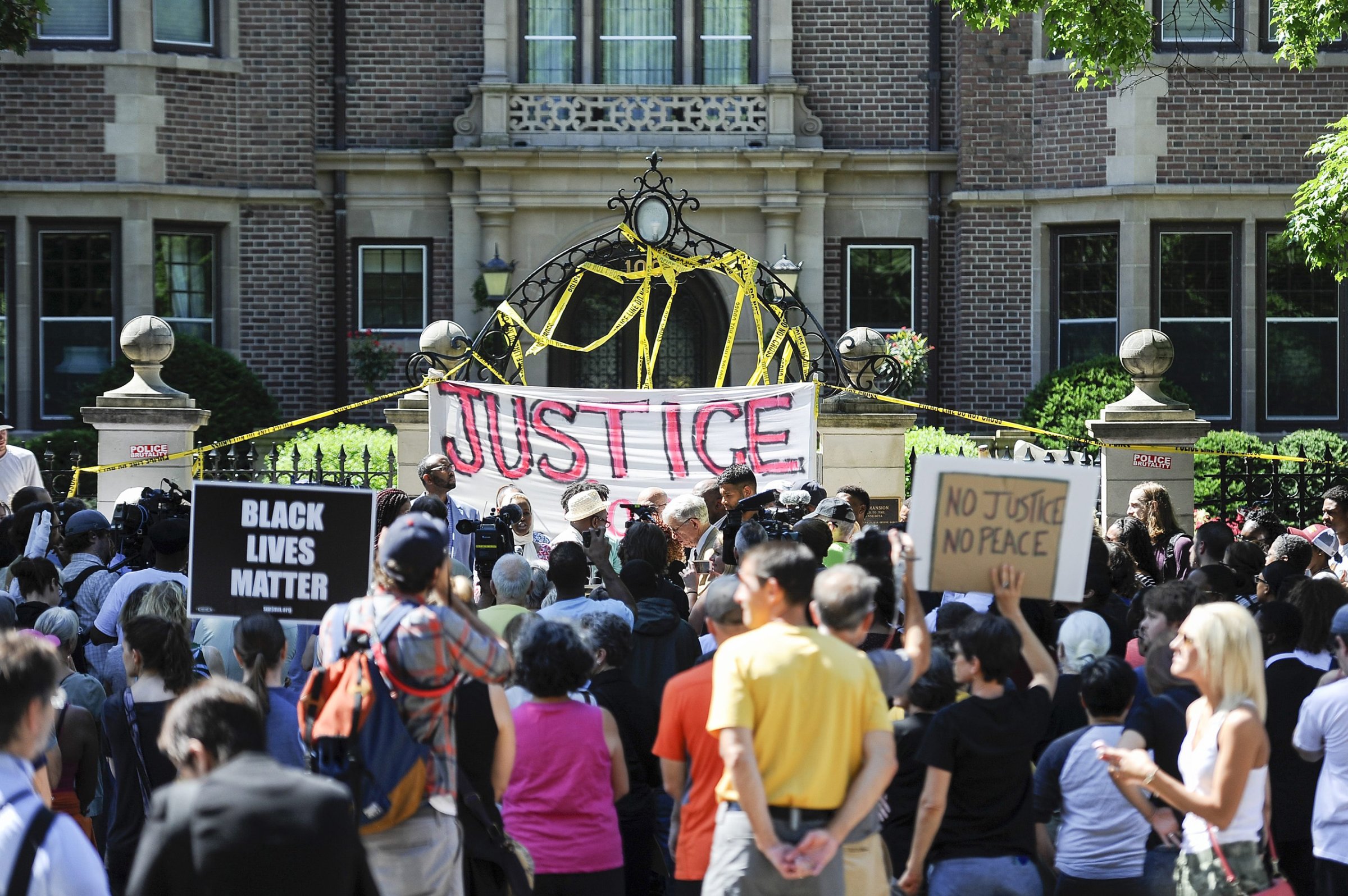
The death of Philando Castile, who was shot by police in a suburb of St. Paul, Minn. on Wednesday, has not only focused attention on police use of force, but also on how the officers responded immediately after the incident.
In a video capturing that aftermath, which was posted to Facebook Live by Castile’s girlfriend and has been viewed more than 3 million times, Castile is seen barely moving in the passenger seat of a car with blood across his chest as a St. Anthony Police Department officer points a weapon at him. The first minute and 30 seconds of the video shows Castile lying virtually motionless in the car, with no one administering aid.
Diamond Reynolds, Castile’s girlfriend who streamed the video, subsequently told reporters that the police left her boyfriend “sitting in the car after they shot him. Nobody checking his pulse, nothing. The police officer that shot him was still standing there … with his gun still drawn after he was shot.”
Another video taken by a bystander later appears to show several officers administering CPR to Castile outside of the vehicle where he was shot.
While the footage is a narrow slice of the events surrounding Castile’s death, law enforcement experts say that the officers initially appeared uncertain over whether Castile posed a threat even after he was shot.
“In general, you have a two-step process after use of force: Secure the scene, then render aid,” says Seth Stoughton, a University of South Carolina law professor who studies law enforcement. “Maybe that’s handcuffing the subject, kicking a knife away, or moving a firearm away from a subject. As soon as a scene is stabilized, officers have to start rendering aid.”
Police, however, aren’t obligated to actually give aid themselves, though regulations vary from department to department. They are only bound to render aid, which could mean calling in EMS services.
“It can look very callous if they don’t immediately render aid to someone shot in the chest,” says David Harris, a University of Pittsburgh law professor who researches police behavior. “But they’re often not medically trained to do that.”
Read more: Mother of Minnesota Man Killed by Police: ‘He Was Black in the Wrong Place’
The problem for officers, says Jon Shane, a professor at the John Jay College of Criminal Justice, is that officers don’t know if a person is armed and potentially momentarily stunned. “From his point of view, he’s still facing a threat,” Shane says, adding that’s also why others on the scene may also be temporarily detained. Reynolds, Castile’s girlfriend who shot the video, was also briefly handcuffed.
“She’s an accessory to what’s going on until they can confirm or deny whether a crime has been committed,” Shane says.
Castile and Reynolds were stopped in Falcon Heights, Minn., a suburb of St. Paul, for a broken taillight, according to Reynolds. In the video, Reynolds says Castile is licensed to carry a weapon and later told reporters that Castile told the arresting officers that he was carrying a firearm. Reynolds says that Castile was reaching for his wallet to show the officer his ID when he was shot.
The St. Anthony Police Department referred questions about Castile’s death to the Minnesota Bureau of Criminal Apprehension, which did not immediately respond to requests for comment.
More Must-Reads from TIME
- Why Trump’s Message Worked on Latino Men
- What Trump’s Win Could Mean for Housing
- The 100 Must-Read Books of 2024
- Sleep Doctors Share the 1 Tip That’s Changed Their Lives
- Column: Let’s Bring Back Romance
- What It’s Like to Have Long COVID As a Kid
- FX’s Say Nothing Is the Must-Watch Political Thriller of 2024
- Merle Bombardieri Is Helping People Make the Baby Decision
Contact us at letters@time.com